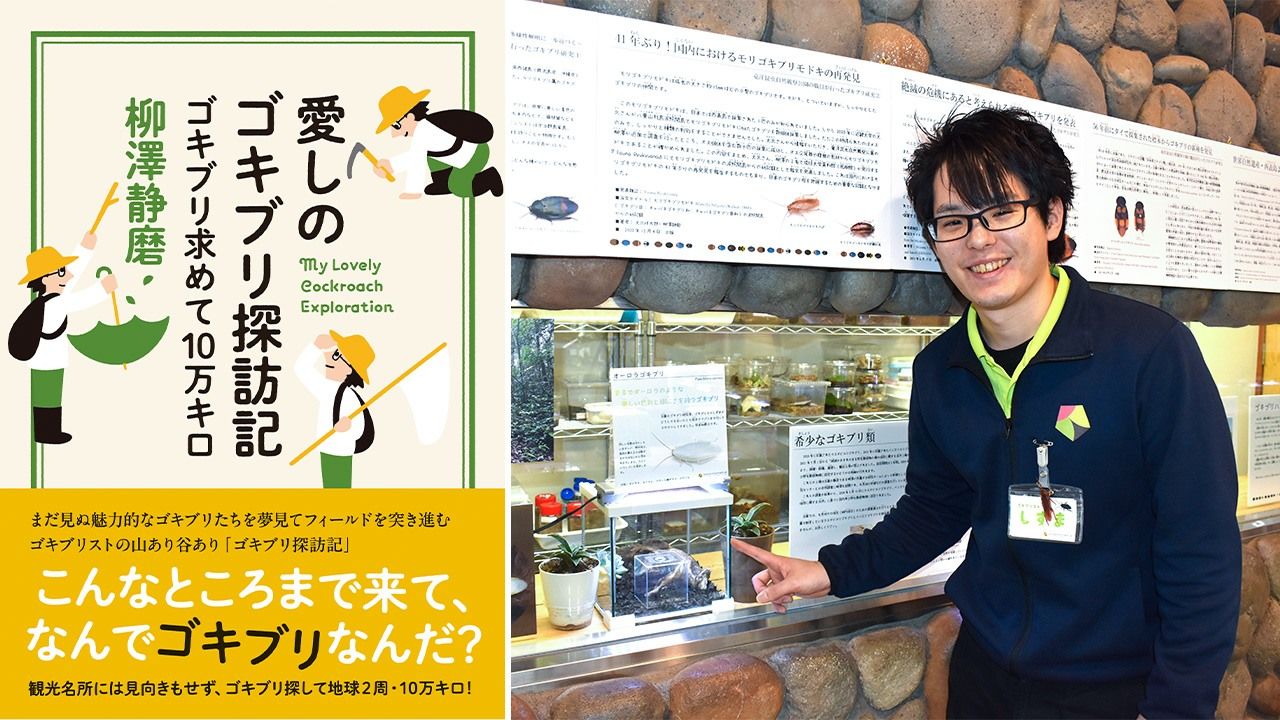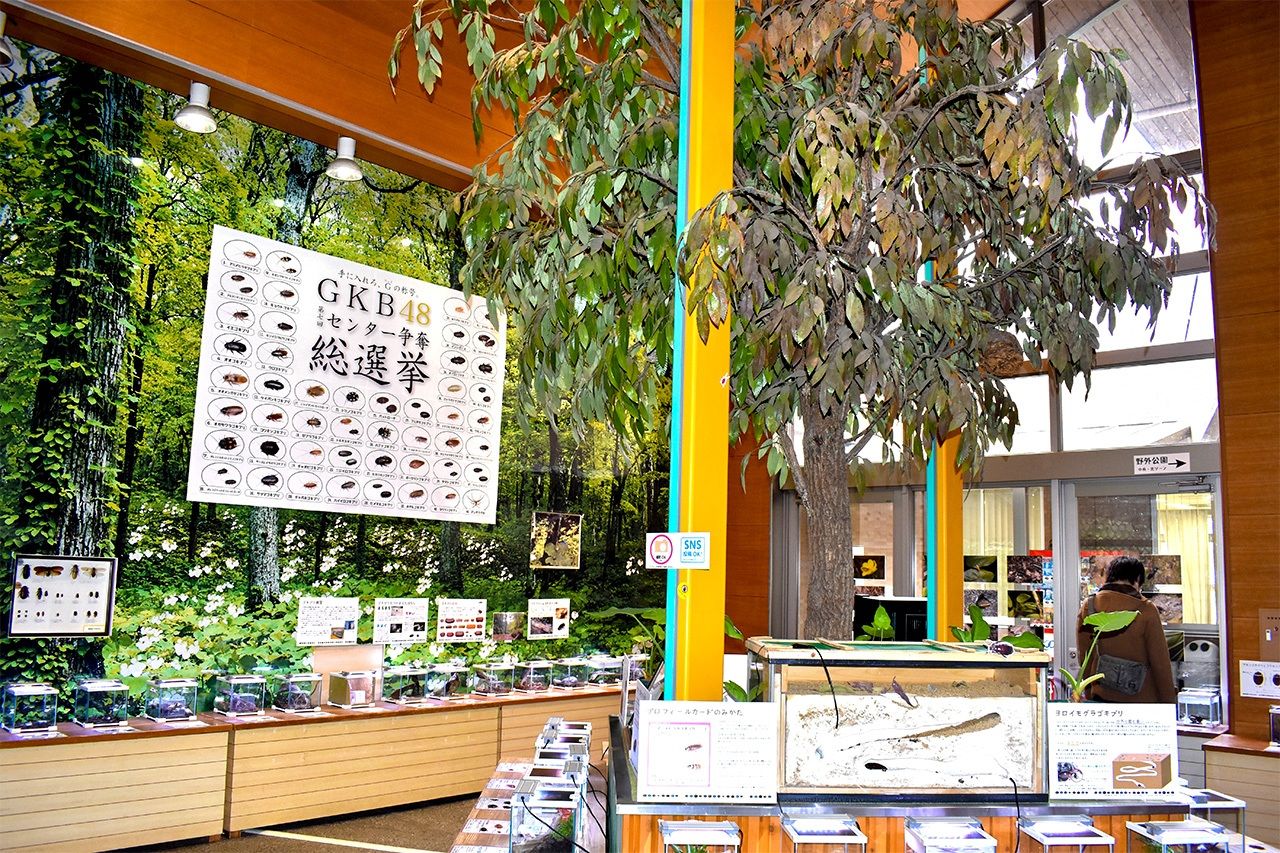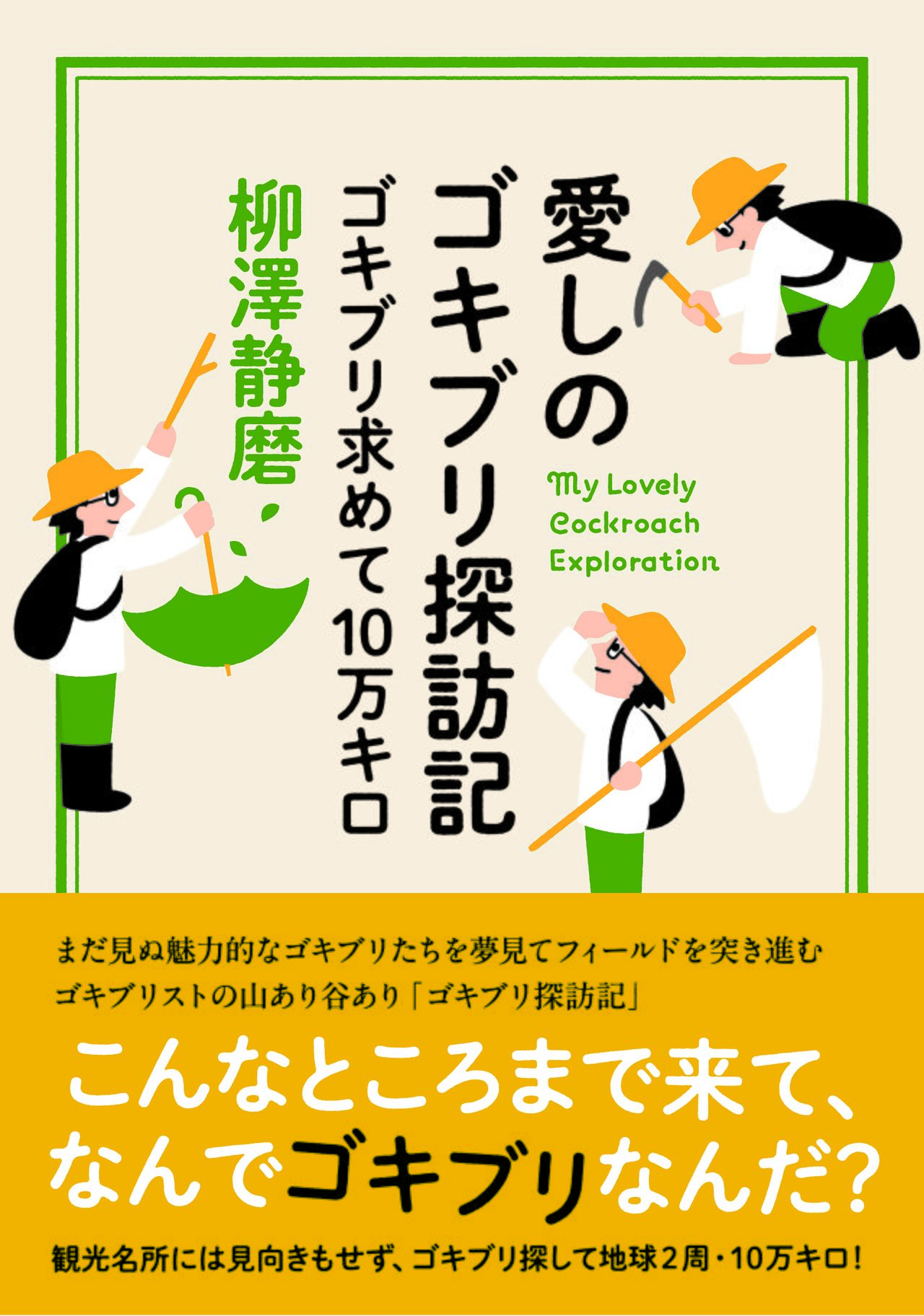
In Search of “Living Fossils”: Meet the Cockroach Hunter
Books Environment- English
- 日本語
- 简体字
- 繁體字
- Français
- Español
- العربية
- Русский
The Cockroach Convert
Located close to the Enshū Sea in the city of Iwata, Shizuoka Prefecture, the Ryūyō Insect Nature Observation Park consists of an indoor museum-style exhibition area and an outdoor park. One member of staff at the facility is Yanagisawa Shizuma, born in 1995 in Hachiōji, Tokyo. Yanagisawa is a budding young entomologist who has spent much of his career so far traveling in search of creatures that most other people run a mile from. Look away, katsaridaphobes—cockroach content follows!
“In January this year I traveled to French Guiana in South America, where I was lucky enough to encounter an extremely rare and beautiful species called the aurora cockroach,” says Yanagisawa, speaking at the park.
The species, which has a watery blue body edged with yellow, can now be seen at the park for a limited time only. It’s the first time there has ever been an opportunity to see this species in Japan.

At left, Yanagisawa Shizuma at work at the Ryūyō Insect Nature Observation Part in Iwata; at right, the aurora cockroach currently appearing at the museum for a limited time only. (© Izumi Nobumichi)
The book reveals that although the author was fascinated by insects as a child, he shared the widespread human loathing for the cockroach family, regarding them as “dirty and disgusting things” and despising them as much as anyone else. This all changed in March 2017, when he visited Iriomote Island in Okinawa on an insect-collecting mission for the museum and encountered the “pill bug cockroach,” a species indigenous to the islands that rolls itself up when threatened like roly-poly bugs. “It really opened my eyes to how interesting and attractive some species of cockroach are,” he says. “I fell under their spell.”
Yanagisawa goes on: “Cockroaches are actually quite diverse. Some of them are vibrant green in color; others move slowly, like the rhinoceros beetles beloved in Japan.” He has dedicated his career to exploring and searching for these creatures, single-handedly discovering 4 of the 64 species known to live in the Japanese islands. Overseas, he has also identified new one species each in Taiwan, Malaysia, and Thailand.
Okinawa: Sun, Sand, and . . . Rare Cockroaches?
The book is a record of the author’s travels in search of unusual cockroaches. The subtropical island of Iriomote, which sparked his interest, is home to no fewer than 32 species, fully half of all the species found in Japan, making it a paradise for cockroaches as well as sun-loving tourists. The author revisited paid a return visit to the island in May 2021, and was lucky enough to discover a new species, the large reddish akazumi cockroach, whose scientific name Periplaneta kijimuna was chosen in homage to the kijimuna, a tree sprite from Okinawan mythology.
His research has taken him to many of the other idyllic islands in the southernmost reaches of the Japanese archipelago in search of new species, including Ishigaki, Yonaguni, and Miyako Islands (all in Okinawa), as well as Tokunoshima and Amami Ōshima—slightly farther north, and administered as part of Kagoshima Prefecture.
Yanagasawa grew up in Hachiōji, on the outskirts of the greater Tokyo metropolitan area. Hachiōji is famous as the home of Mount Takao, which attracts 3 million hikers and walkers every year—a world record. For Yanagisawa, this area was his “local patch” where he took his first steps as a budding entomologist, but there are always new discoveries to be made. When he returned to home in the summer of 2018, he encountered an elegant and attractive cold-resistant Yamato gokiburi (Japanese cockroach)—a common species in Japan, but one that he had never encountered on Mount Takao before.
Tropical Giants in Malaysia and Australia
The section dealing with Yanagisawa’s overseas expeditions reads like an adventure story. The author had spent roughly five years hunting cockroaches in Japan by the time he entered Malaysia via Singapore. It was his first trip outside Japan.
He invited two fellow nature-lovers to join him for what proved to be a journey of numerous ups and downs. Despite being harassed by nocturnal “night wasps,” persistent leeches, and scorpions, the team were not deterred from making the most of their insect safari, feasting their eyes on splendid jungle species such as the giant Malay cockroach (the “giant roach”). The author sums up his expedition to Malaysia in the following terms.
“Remarkably, on this one trip alone, I saw more than 60 species of cockroach. In just 10 days or so, I was able to observe almost the same number of species as can be found in the whole of Japan.”
In March 2023 he fulfilled a long-term dream when he traveled to Australia, in the company of a friend with previous experience on entomological expeditions. They were able to observe many fascinating species, including the giant burrowing cockroach, also known as the rhinoceros cockroach, for the plate-like armor that protects its thorax and abdomen from predators. This species lives in underground burrows and is believed to be the heaviest species of cockroach in the world, weighing in at more than 30 grams. The roaches that cause uproar when they appear in kitchens up and down Japan, by contrast, tip the scales at a measly 2 grams or so.
In Australia, Yanagisawa was also bitten by a flea that carries a disease that can prove fatal in the worst-case scenario. But the expedition was also rewarded with happier encounters with six-legged fauna, including the adorable eucalyptus cockroach and the “shining” Mitchell’s diurnal cockroach—in all, more than 20 different species.
Rating the Roaches
Every year, the Ryūyō Nature Insect Observation Park puts on a special cockroach-themed exhibition, with Yanagisawa playing a central role in organizing the exhibits. This year, the seventh time the event has been held, the facility organized a popularity contest in which visitors could vote for their favorite species. The name of the event, “GKB48,” was a happy pun combining the Japanese word for cockroach (gokiburi) with the popular “elections” held by the singing, dancing girl band AKB48 and its offshoots.

The GKB48 “general election,” held for the seventh time this year, allowed visitors to vote for their favorite of the many species of cockroach on display. (© Izumi Nobumichi)
There is nothing half-hearted about Yanagisawa’s enthusiasm. In previous centuries, some cockroaches were used in some types of traditional Chinese medicine. As soon as he learned this, Yanagisawa knew that he had to make up the medicine and try it himself. In his book, he writes in glowing terms about the cockroach family and what makes it so fascinating.
“Cockroaches are species that live close to human beings, making them interesting from a cultural point of view as well as their inherent entomological interest. Why is it that so many people have a phobia about cockroaches? For me, studying them is like a never-ending adventure: I’m constantly making new discoveries and encountering new mysteries every day. Cockroaches are fascinating creatures; that’s why I dedicate myself to their study.”
Yanagisawa’s expeditions have already taken him across tens of thousands of kilometers—more than twice around the globe, as he reflects. Even so, he has still not seen even a tenth of the 4,600 or so species of cockroach believed to exist around the world. His travels look set to continue for some time yet.
Itoshi no gokiburi tanbōki (My Lovely Cockroach Exploration)
By Yanagisawa Shizuma
Published by Beret Publishing in 2024
ISBN: 978-4-86064-750-6
(Originally published in Japanese.)
